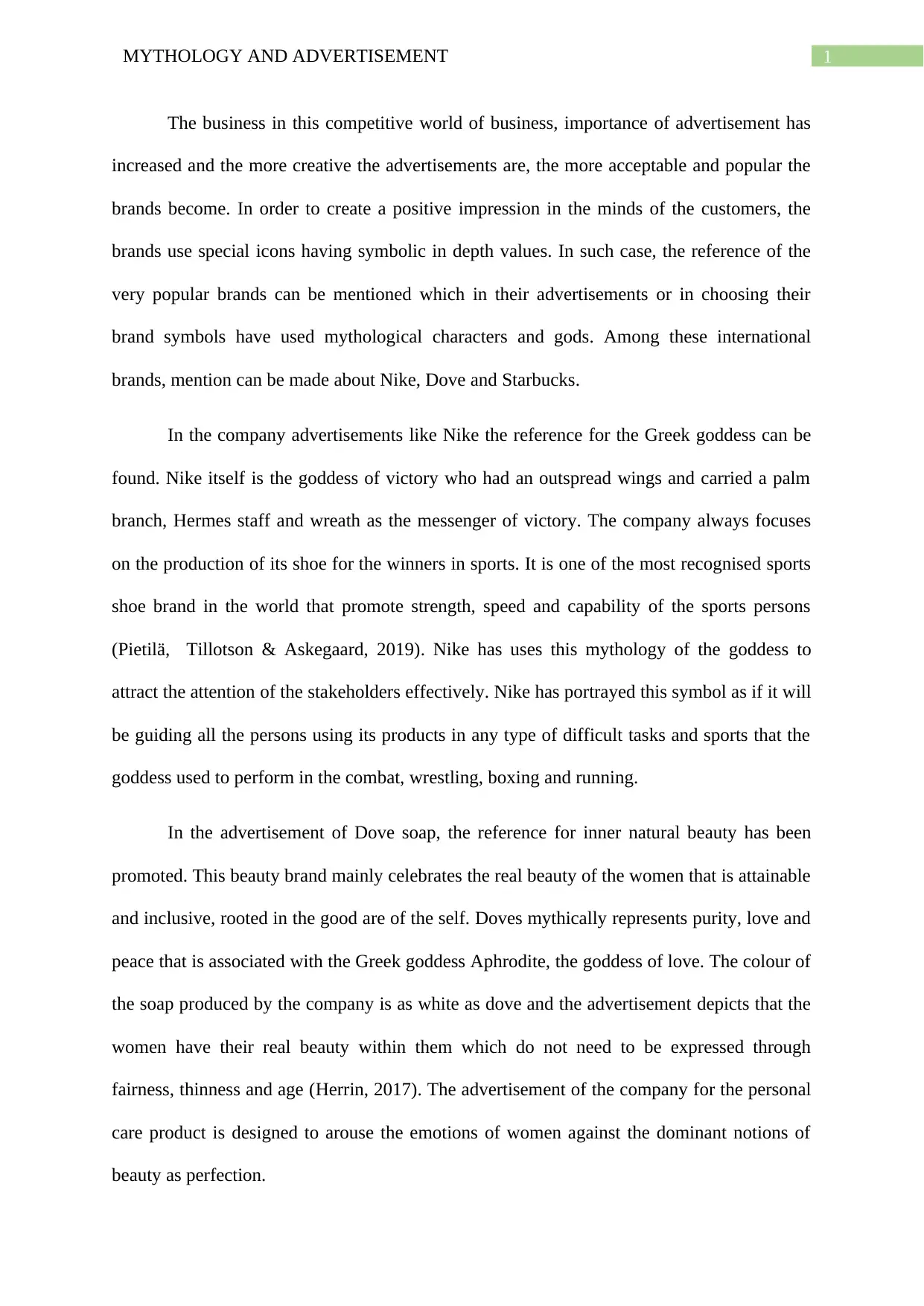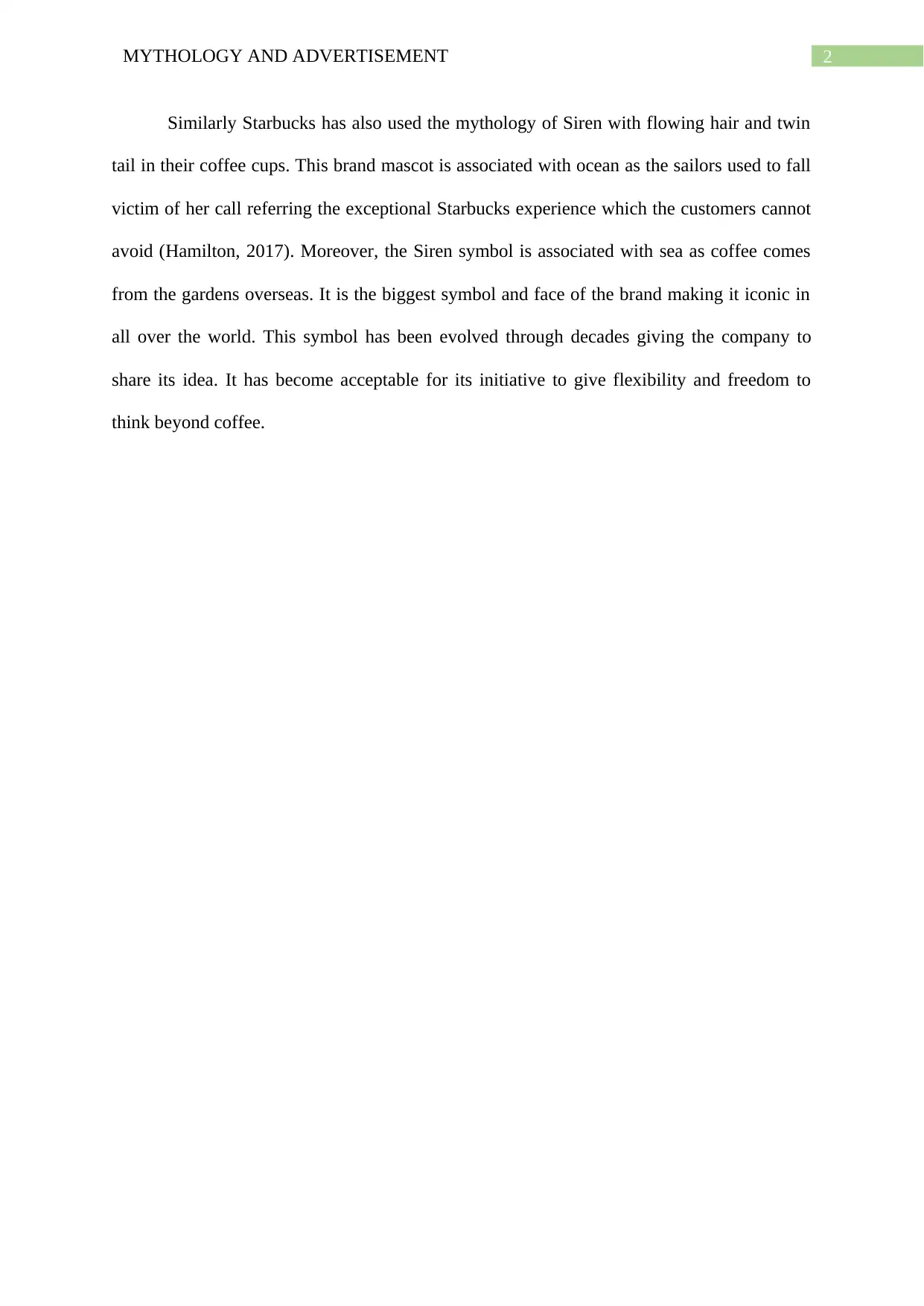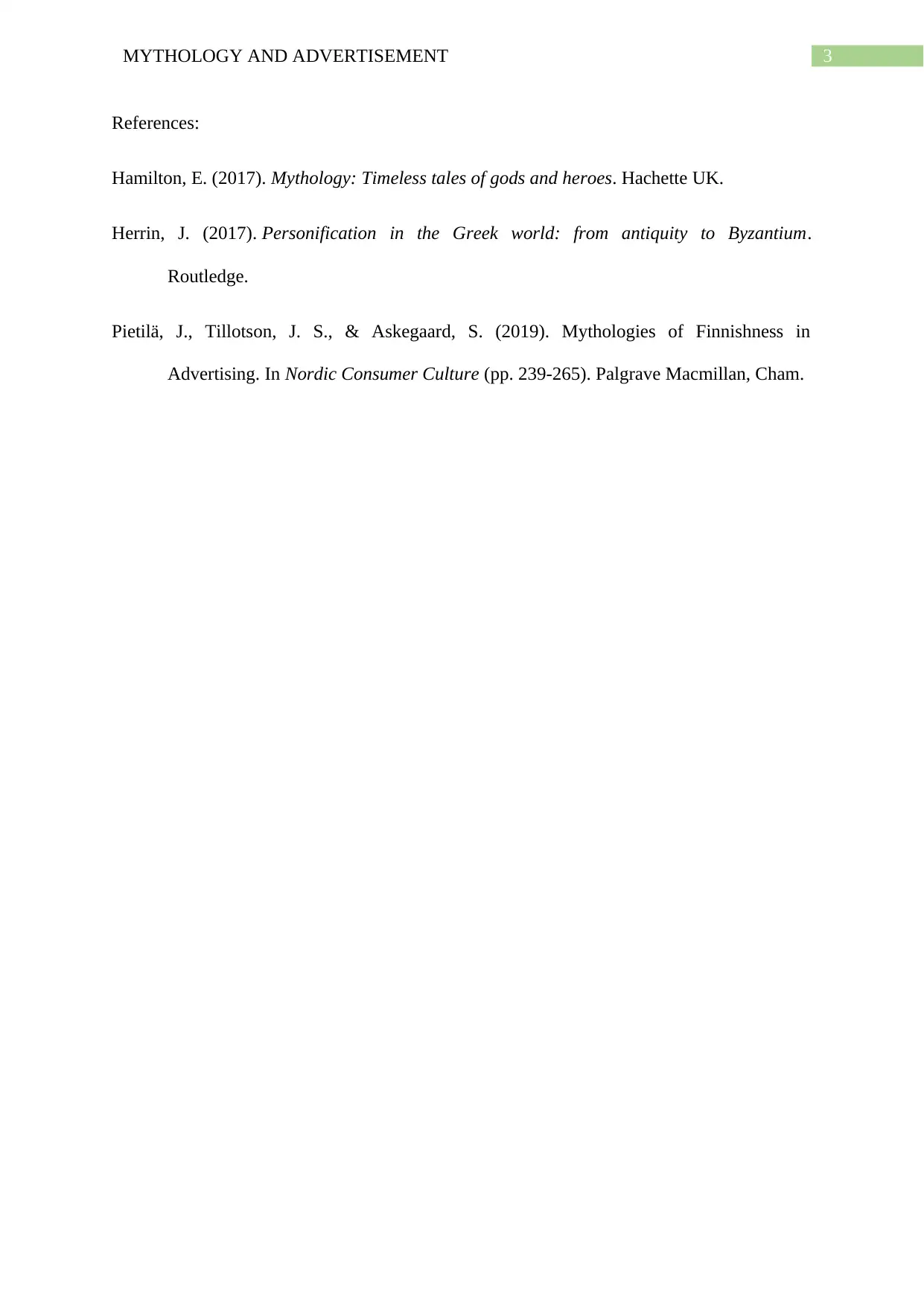Mythology and Advertisement: An Analysis of Nike, Dove, and Starbucks
VerifiedAdded on 2022/11/28
|4
|625
|135
Homework Assignment
AI Summary
This assignment analyzes how three major brands, Nike, Dove, and Starbucks, incorporate mythological elements into their advertising campaigns. The student examines specific advertisements, identifying the mythological characters and symbols used, such as the Greek goddess Nike, the goddess Aphrodite, and the Siren. The analysis explores how these symbols are employed to create a positive brand image and connect with consumers on an emotional level, focusing on the effectiveness of using mythology to promote products related to sports, beauty, and the coffee experience, respectively. The assignment also considers the cultural context and the impact of these mythological references on consumer perception and brand recognition, referencing the provided academic sources to support the arguments.
1 out of 4






![[object Object]](/_next/static/media/star-bottom.7253800d.svg)